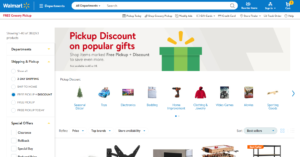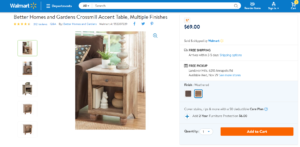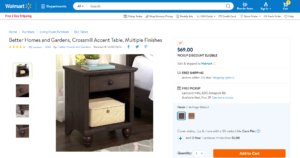In April 2017, Walmart decided to offer a store pickup discount. The idea was that select large items not in stores would either ship home for free or ship to the store with a 4 to 5 percent discount on the price of the item. Obviously, the idea here is to increase Walmart’s foot traffic while decreasing their shipping expenses. Moreover, while this will decrease revenue a little, the margin will likely increase for three main reasons. Firstly, shoppers tend to spend more in-stores than they do online. Secondly, by keeping the items in a low-rent warehouse until the items are sold, Walmart is saving valuable space in its more higher-rent store shelves for other smaller and more profitable items. And finally, shipping items to the store comes only at the marginal cost of having an employee place the item on the regularly scheduled Walmart inventory truck as opposed to the significantly higher cost of having an employee send the large and heavy package individually through a third-party shipper. Thus, the saved home delivery shipping cost on the large item is often more than the discount offered to ship to the store, with the rest of the regular store inventory. All in all, this seems like a great pricing strategy to get items moving out of inventory.
Additionally, shoppers can go online and look through all of the goods that offer this pickup discount without searching for anything in particular (see image below). This new filter gives online shoppers and bargain hunters a new way to browse. Consumers always looking for the best discount can look through thousands of goods that receive the pickup discount. This makes consumers feel like they found a product for a bargain when, in fact, the store has enticed the consumer to buy something that they had very likely not planned to buy. Furthermore, this pricing strategy helps with pushing slow-moving inventory. For example, as I was browsing through the pickup discount items, I noticed that a nightstand in dark brown featured a pickup discount while the same product in light brown did not (see images below). As the color is the only difference between the two items, this is clearly a push to sell the dark brown nightstand, which is likely slow-selling.
This pricing strategy may also be very relevant for Black Friday. Ordering products online and shipping them to the store might encourage even more shoppers to take part in the Black Friday tradition. As they are picking up their item, they have the potential of walking by some other item that they may be inclined to buy given the deep Black Friday discount.
While in theory this strategy may seem to be very beneficial, in practice, it might not be. In April, Walmart rolled out the pickup discount scheme to 10,000 products. It claimed that by June, it would reach its goal of a million by June as claimed in order to make this strategy relevant. Seven months later, the pickup discount items increased by almost 40 fold but are still far from the one million dollar goal.
Why do you think this might be? Are customers not using the service or has Walmart decided that this strategy would only be profitable with this select number of products? Have you used pickup discount? Were you even aware of the pricing strategy?


